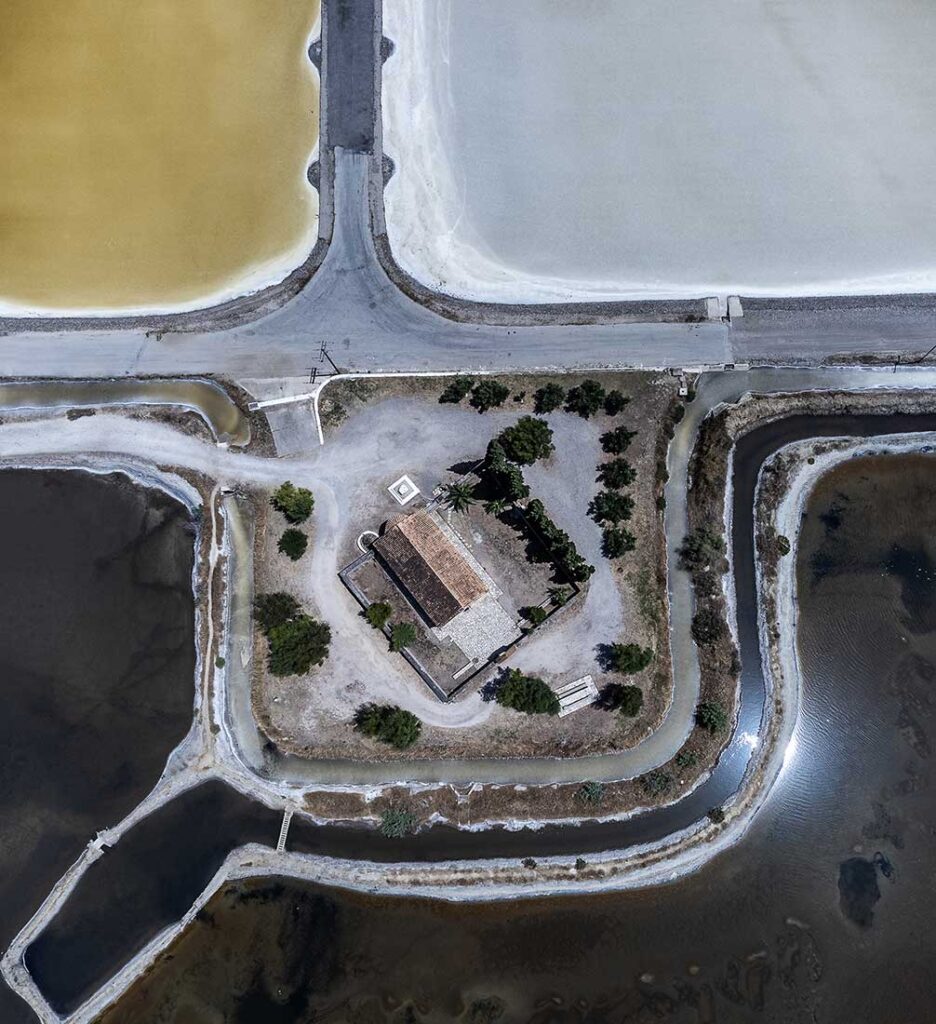Pygmalion Karatzas
2 Series: Salt Pans | Mount Athos
Salt Pans
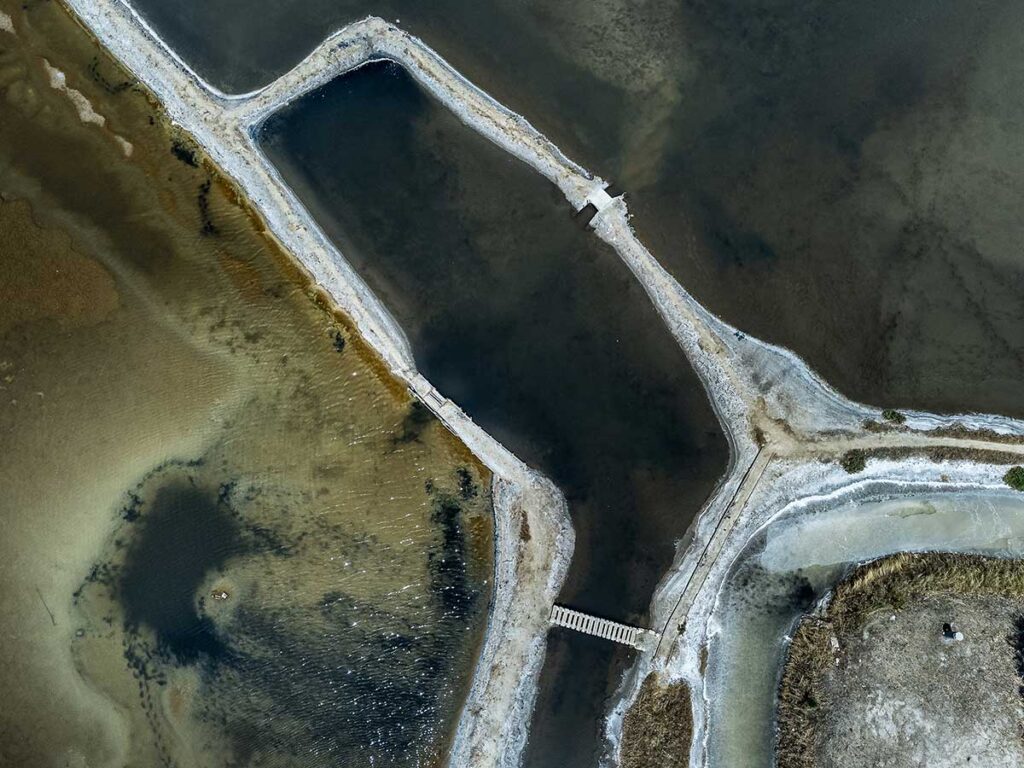
The Messolonghi-Aitoliko lagoon complex is located in the north part of the Gulf of Patras on the central west coast of Greece. With its shallow area of 150 sq. km. extended between the Acheloos and Evinos rivers, it is one of the most important wetlands in the Mediterranean. The ecosystem comprises six lagoons that are part of the Natura 2000 network protected by the Ramsar Convention.
The open and closed type lagoons communicate with the sea along channels and receive fresh water from the drainage pump system of the region, creating a unique aquaculture environment. Fishing is mainly done with traditional methods by local fishermen in fish-pools called ‘divaria’. The area is also rich in black salt marsh and hosts one of the biggest salt factories.
The mineral mud and sea salt make Agia Triada and Alikies beaches ideal natural spas, a daily ritual for locals.
The name of the settlement, ‘Tourlida,’ was given after the marine bird species that were found in the area, the tourmalines (Eurasian curlew). This islet connects to Messolonghi by a causeway stretching 5 km.

This self-initiated photographic project exploring the wider area of the lagoon started a few years back with a set of long-exposure images of the ‘blades’ stilt fishermen’s houses. It became part of the collective fine arts exhibition ‘Lagoons – those fragile entities’ curated by Nina Fragopoulou at the Fethiye Mosque in Nafpaktos and later at the Museo del Territorio in Cormons, Italy, as part of the Trieste Photo Days Festival.
“Salt has played a crucial role in the history of civilization, enabling food to be preserved over the winters until the modern era of refrigeration and preservatives. Salt was even used in the slave trade in antiquity. The ancient expression “not worth his salt” came from this practice.”
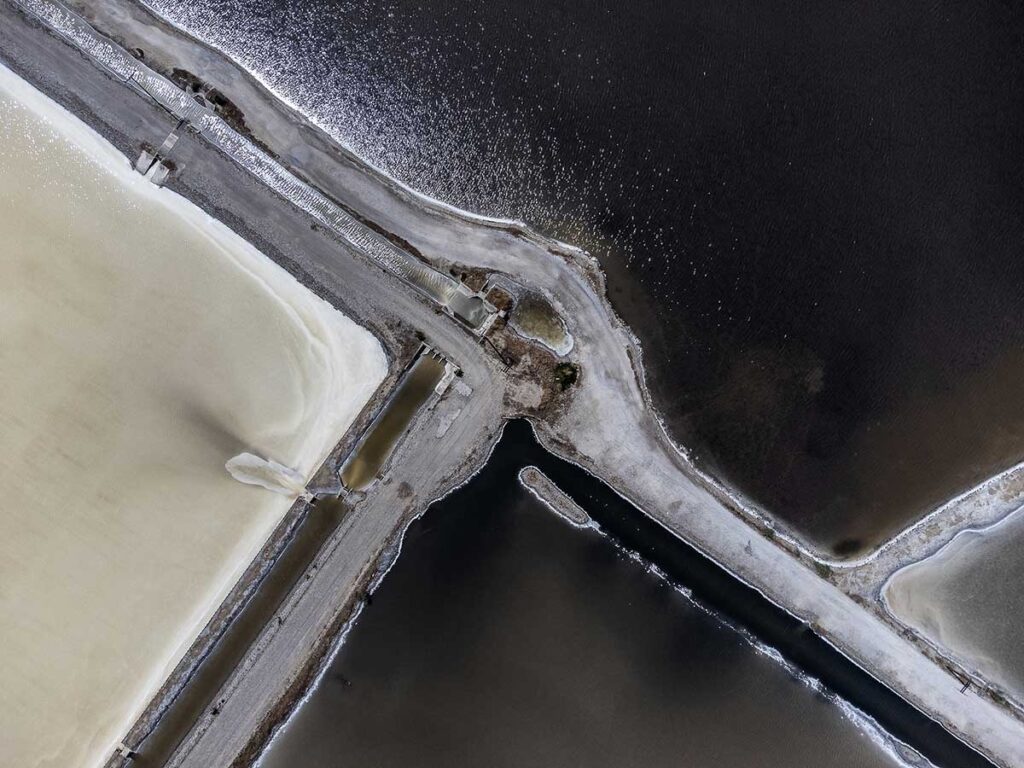
‘Salt Pans’ series presents a more recent second exploration using aerial photography to focus on the region’s Salt Pans, continuing to fuse the boundaries between topographic/representational and expressionistic/pictorial iconography in its exploration of the integral perspective.
Salt has played a crucial role in the history of civilization, enabling food to be preserved over the winters until the modern era of refrigeration and preservatives. Salt was even used in the slave trade in antiquity. The ancient expression “not worth his salt” came from this practice. With tales of its usage during sacrifices and religious rituals, the history of salt is as exotic as the amazing ‘Alykes,’ the salt marsh gardens that extend for miles on end in Messolonghi. The region is said to produce 60% of the country’s salt. Similarly to the Mount Athos series, planar views explore the unique formalistic elements of the terrain. The minerals and salt flats color palette create natural abstractions evident only from this bird’s eye point of view.

Mount Athos
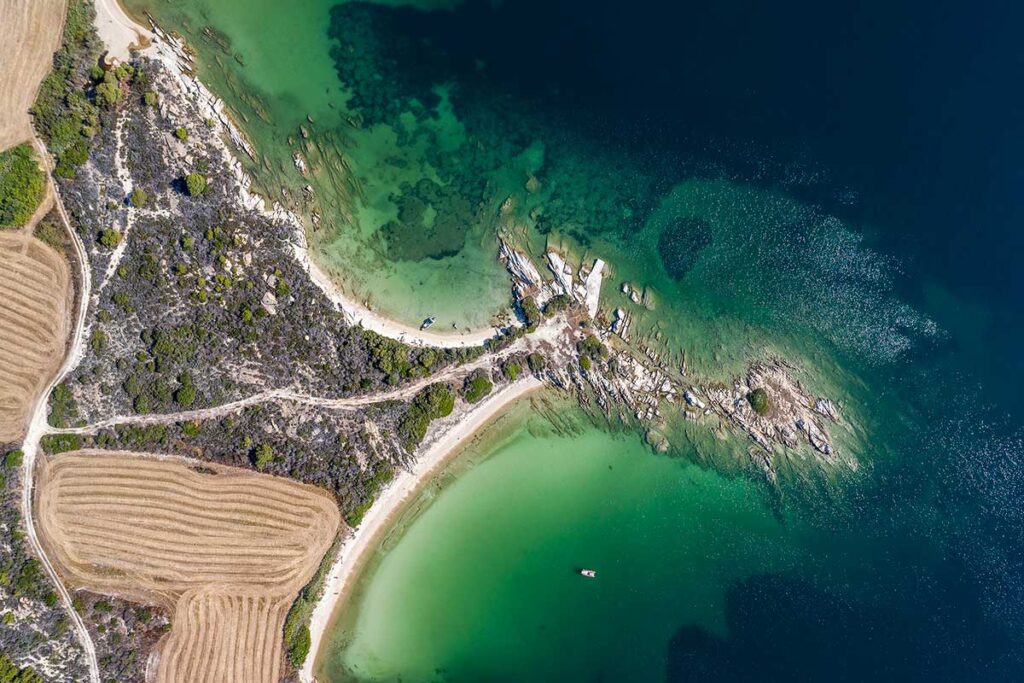
The Athos peninsula is located in northeastern Greece and is governed as an autonomous region by the monastic community. Mount Athos has been inhabited since ancient times and is known for its long Christian presence and historical monastic traditions, dating back to at least 800 AD during the Byzantine era. Because of its long history of religious importance, the well-preserved agrarian architecture within the monasteries, and the preservation of flora and fauna around the mountain, Mount Athos was inscribed on the UNESCO World Heritage List in 1988.
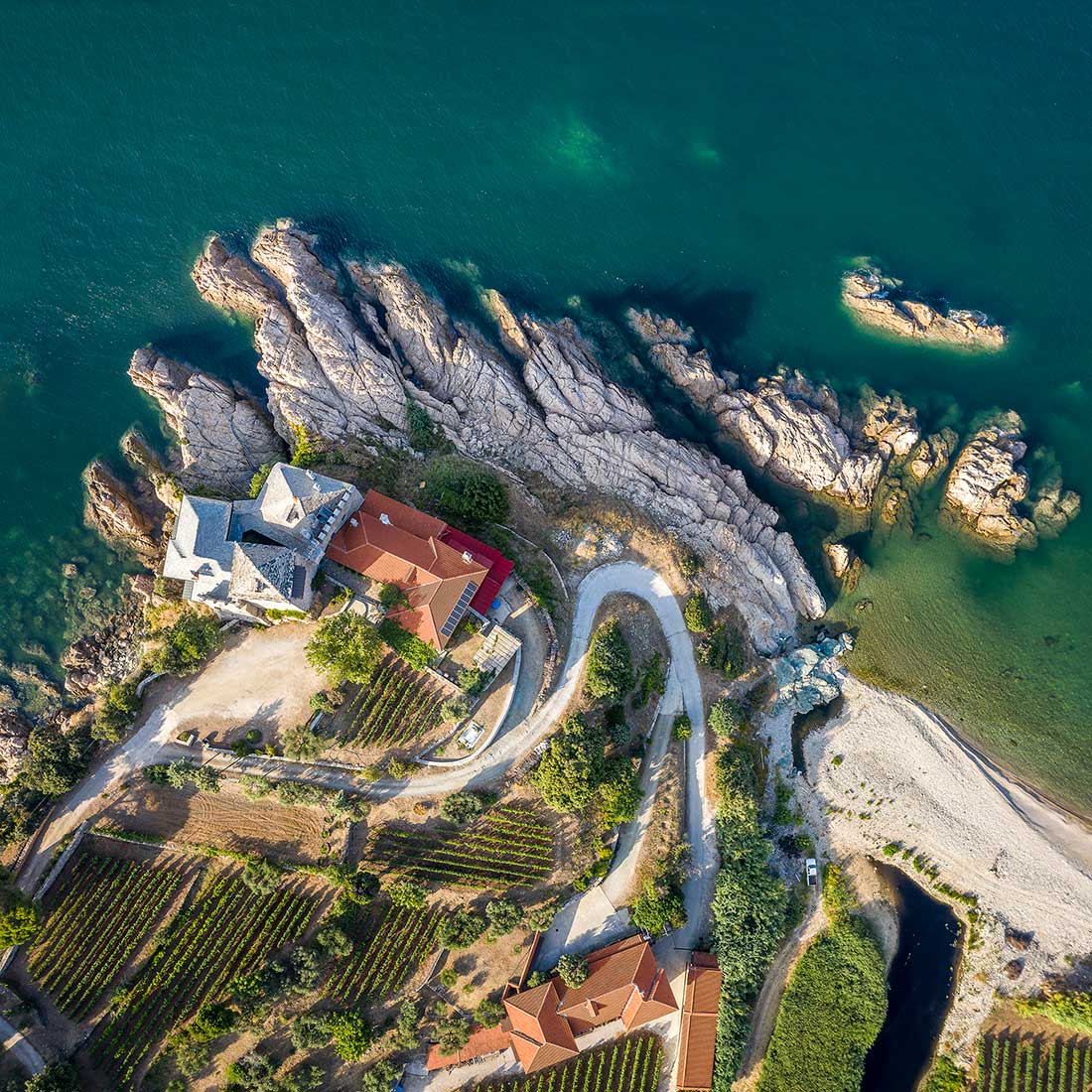
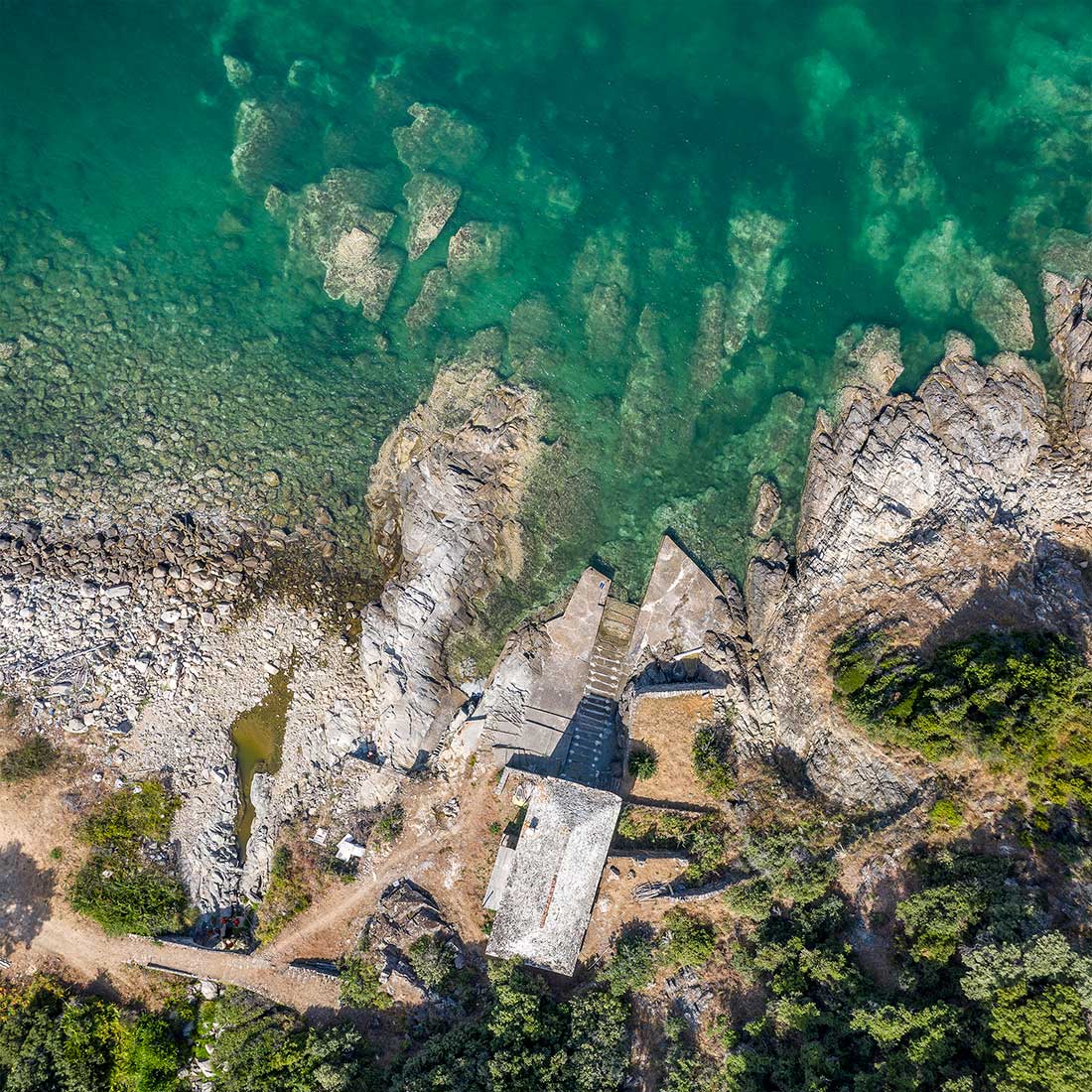
The photographic series was taken during an expedition for the Athanasios C. Laskaridis Charitable Foundation. The Typhoon is the only vessel in the Mediterranean with the sole purpose of cleaning up the most inaccessible Greek coastlines, which has become, unfortunately, in some places, a waste concentration. This initiative is within the ACLCF “Project Typhoon” (www.aclcf.org), an important and indeed ambitious initiative for the maritime environment and its maintenance.
Typhoon operates in the Greek waters as the catalyst for the protection of the environment from pollution and fulfills the scope of the mega vision and mission set by the Foundation’s founder; to contribute with determination to the clean-up of Greece’s coastlines as well as that of its thousand islands – small and big ones, from any type of pollutants.
Drone aerial photography was used to capture the extended locations and broaden the scale of the documentation even further.
Extra attention was given to planar images that are a product of a more meticulous and intuitive terrain investigation. Such images looking straight down from different heights capture the scope of the operations in various scales while simultaneously bringing out the unique formalistic elements of this majestic environment.
I would like to thank the ACLCF for entrusting me with the Typhoon Project assignment, the vessel’s whole crew for assisting in the field, and the Secretariat of Athos Holy Community for allowing us to document the cleaning operations and landscapes.
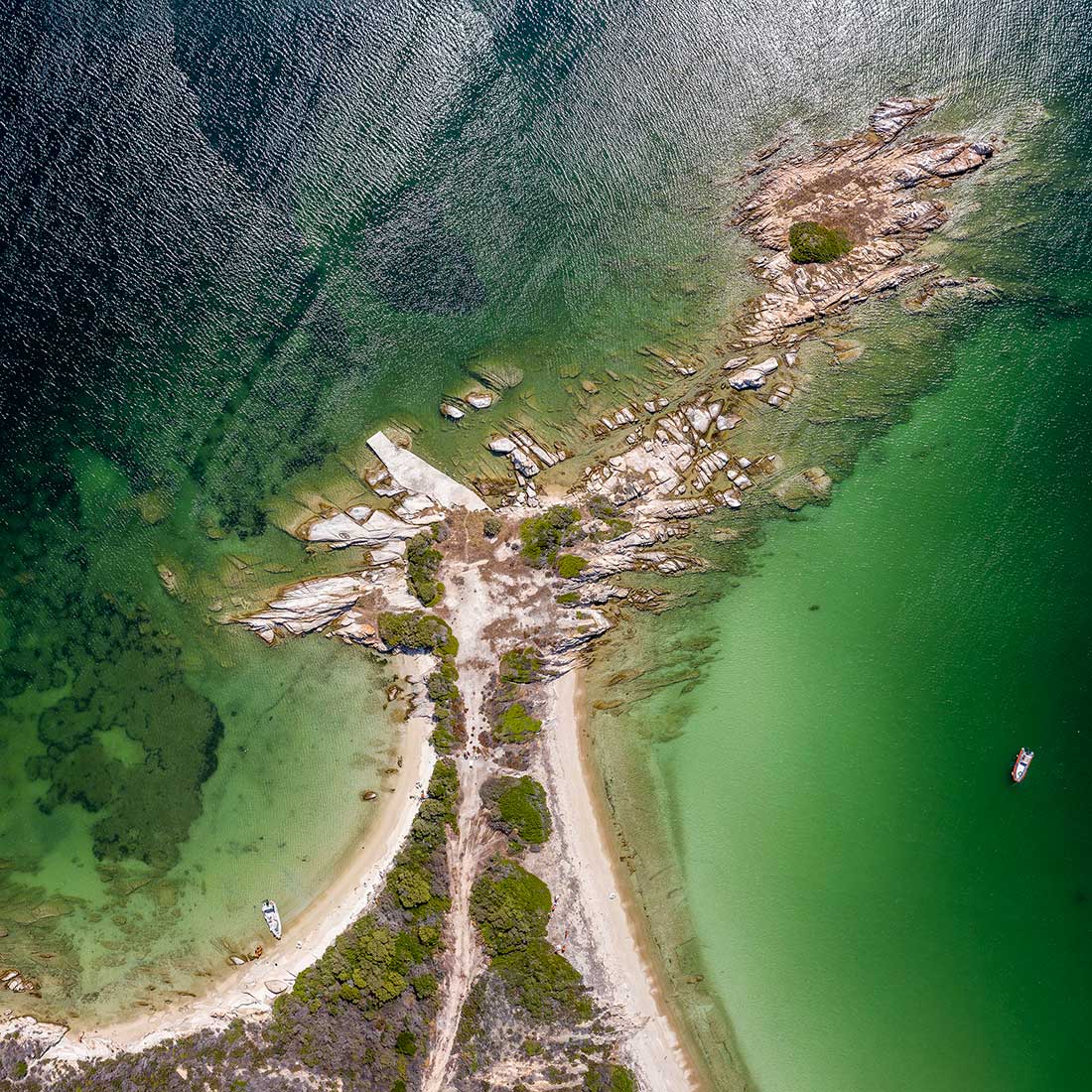
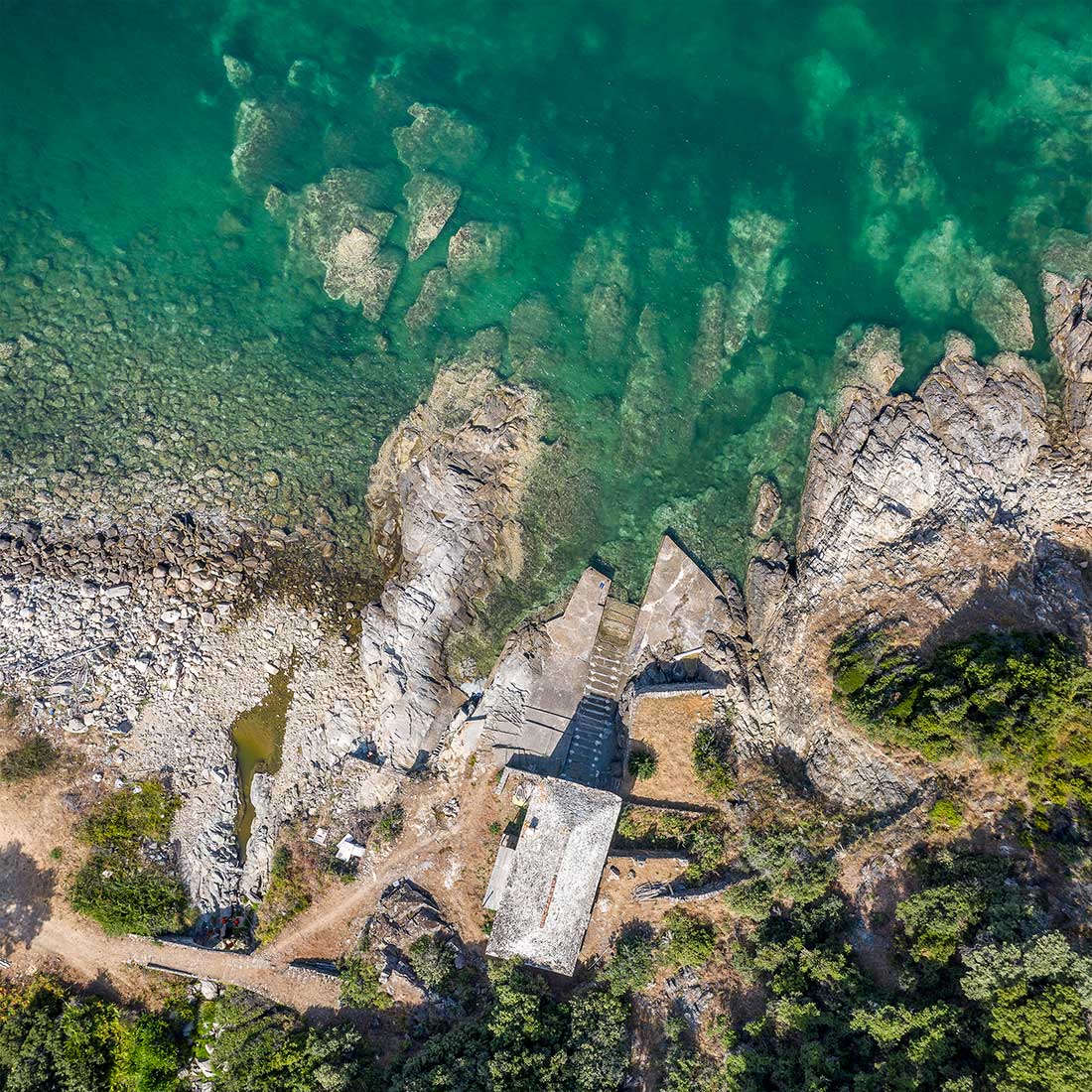
Pygmalion Karatzas
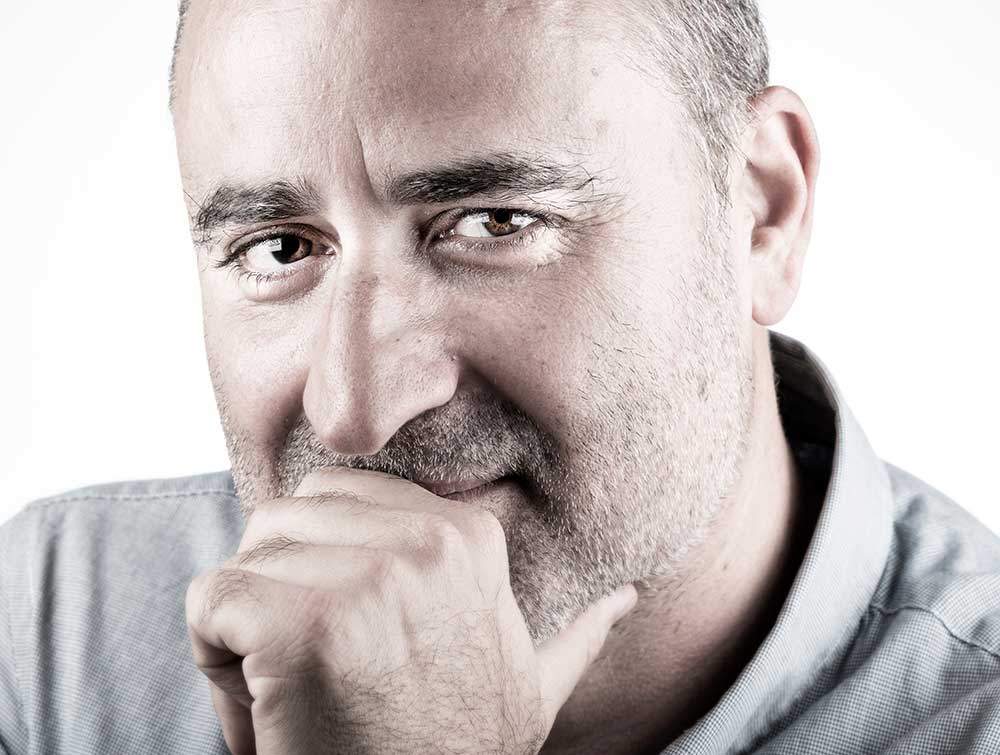
Pygmalion Karatzas studied Architecture at the Technical University of Budapest (1991-95), Urban Design at Heriot-Watt University in Edinburgh (1995-97), and practiced architecture for 12 years. In 2006 he participated in the first ‘Ecovillage Design Education’ training-of-trainers course in Findhorn, organized by the Global Ecovillage Network and endorsed by the United Nations Institute for Training and Research. Since 2013 he has been focusing systematically on architectural and fine art photography, producing a portfolio of 250+ architectural, commercial, and artistic projects from Europe, the USA, and the Middle East.
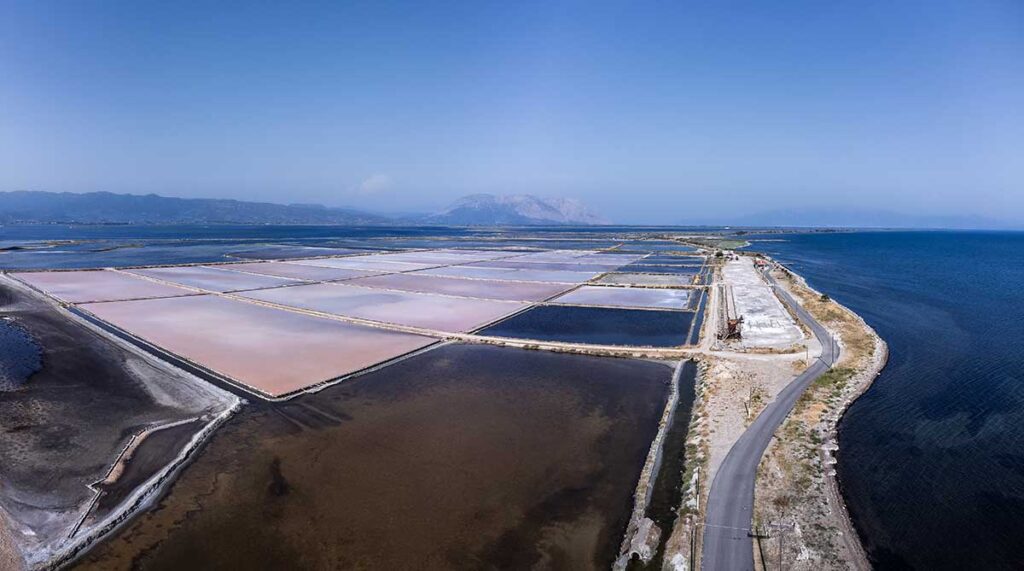
His images are regularly featured in Greek and international media, and they have received over 100 distinctions from leading global photographic competitions. He has participated in exhibitions in Greece, Italy, France, the UK, and the USA, with fine art prints being part of public and private collections. Between 2014 and 2019, he served as the photo editor for the Danish Architecture Center at their ezine arcspace.com. Divisare Atlas of Architecture ranks him among the top 100 architectural photographers worldwide. He is a contributing photographer to Arcaid Images London, iStock Getty Images, and Adobe Stock.
Karatzas’ book collection ‘Integral Lens’ received 3rd place in the PX3 Prix de la Photographie Paris 2018, and ‘Nortigo’ received 2nd place in the Moscow International Foto Awards 2019. Between 2015 and 2016, with the prestigious Fulbright Artist Scholarship award, he traveled for 5 months across the United States, where he conducted the project ‘Integral Lens’ – an integral approach to the study and representation of the built environment through the photographic medium. Other noteworthy photo-reportage include the architectural boom in Doha, Qatar; the national pavilions at the EXPO 2015 in Milan; the Oceanus scientific expedition of the University of Patras in Lebanon; the coverage of Attiko Metro constructions in Athens and Thessaloniki for the Hellenic Ministry of Infrastructure and Transport; the environmental expeditions of the A.C. Laskaridis Charitable Foundation around Greece with the Typhoon Project.
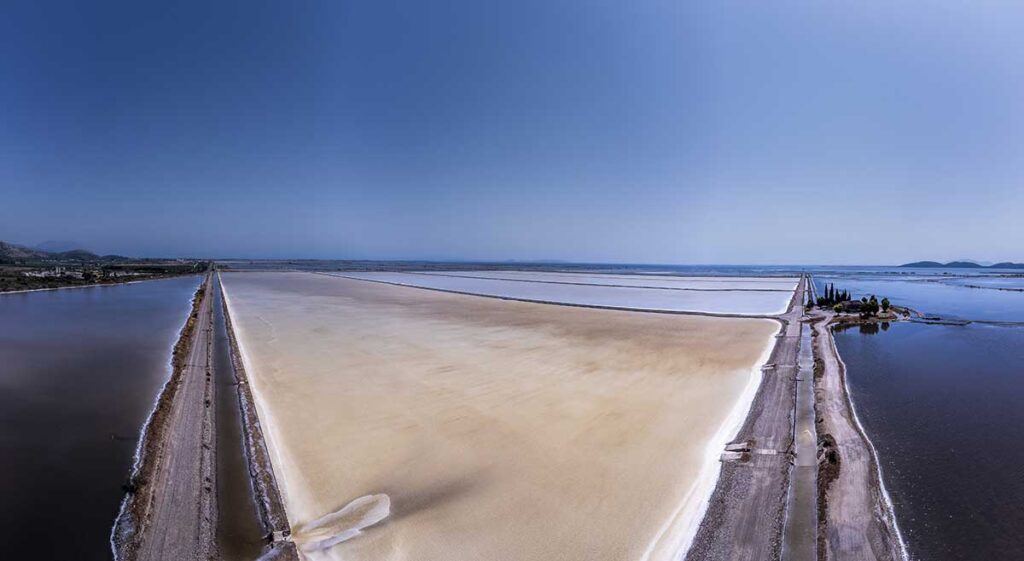
In collaboration with professor of architecture Mark DeKay and in affiliation with the University of Tennessee in Knoxville, their paper on a multi-perspectival approach to architectural photography was presented at the 3rd Integral European Conference in Hungary, at the 5th Trieste Photo Days Festival; and at the Integral Design & Research Lecture Series of the University IUAV of Venice. Since 2019 it has become part of an academic mini-term curriculum. ‘Capturing the Human Experience in Place’ was developed and conducted by Mark DeKay, Pygmalion Karatzas, and Susanne Bennett as a traveling photographic workshop for students from various faculties.
Through his commissioned assignments from architectural firms, businesses, and organizations, his collaborative photojournalistic reportages, as well as his self-initiated photographic projects, he exhibits his passion and dedication to the study, representation, and dissemination of the built environment and its broader role as a cultural asset.

